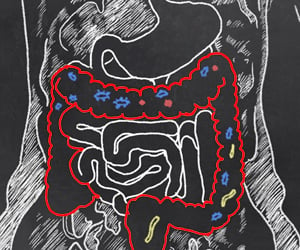Much like flipping a light switch, the hepatitis C virus turns on human immune defenses upon entering the body but also turns off those defenses by manipulating interaction of key cellular proteins.
Much like flipping a light switch, the hepatitis C virus turns on human immune defenses upon entering the body but also turns off those defenses by manipulating interaction of key cellular proteins, UT Southwestern Medical Center researchers have found.
This same molecular “on/off switch” controls immunity against many viruses, highlighting a potential new target for novel therapeutics to fight viruses, the researchers report.In a study available online this week and in an upcoming issue of the Proceedings of the National Academy of Sciences, UT Southwestern scientists describe how the proteins RIG-I and LGP2 normally interact to turn on and off immune response to hepatitis C.
It’s known that when a virus invades a cell, the RIG-I protein triggers the body to generate an immune response. Once the virus has been cleared out, the LGP2 protein turns off the RIG-I signals.
This interaction between RIG-I and LGP2 is vital for properly regulating immunity, but viruses such as hepatitis C can disrupt the normal process to shut down immune defenses early, the research team found.
“This knowledge will help us design drugs that mimic the viral effects on these proteins to either activate a host’s immune response or shut it down,” said Dr. Michael Gale, associate professor of microbiology and the study’s senior author. “This holds great potential in developing new disease therapies, because the tactics employed by hepatitis C to trigger immune response are similar to those employed by other viruses such as West Nile, influenza and the common cold.”
Dr. Gale’s research centers on studying the mechanisms viruses use to evade immune defenses. Of particular interest is the hepatitis C virus, a blood-borne infection transmitted by intravenous drug use, blood transfusions and sexual contact. It affects 4 million U.S. residents and is the nation’s leading cause of cirrhosis and liver cancer.
Advertisement
Just how RIG-I signaling is normally regulated, however, hadn’t been known.
Advertisement
“Hepatitis C and others viruses hijack this signaling pathway to stop immune defenses,” he said.
His research team and others are working to design novel therapeutics and drugs that could mimic viral effects on RIG-I to spur antiviral response or, conversely, mimic viral effects on LGP2 to shut down RIG-I activity. RIG-I shutdown would be necessary in cases when the immune system’s response to a virus is dangerously overactive, which happened in many flu cases during the 1918 pandemic.
“Fine-tuning immune response to infection is where antiviral or immune regulatory drugs are headed,” said Dr. Gale.
Source-Newswise
SRM






